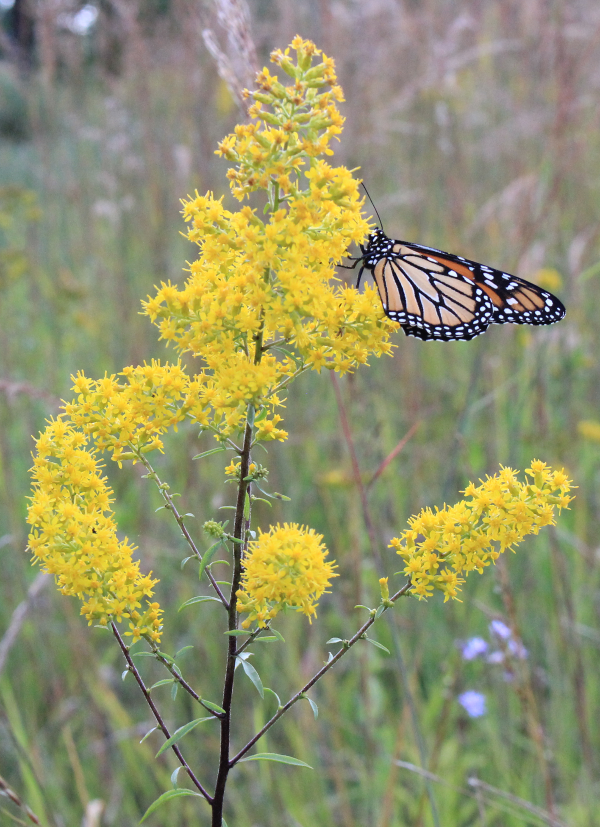Showy goldenrod
Solidago speciosa Nutt.
Family: Asteraceae (aster)
- Bloom Period:
- Late,
- Growth Cycle:
- Perennial,
- Growth Habit:
- Forbs/Herbs,
- Insect Type Attracted:
- Natural Enemy,
- Pollinator,
- Light:
- Full,
- Partial,
- Region:
- Northern Lower Peninsula,
- Southern Lower Peninsula
- Soil Moisture:
- Dry,
- Medium,
- Height:
- 3-5ft
Natural enemies attracted
Highly attractive: Orius insidiosus.
Moderately attractive: Chalcidoidea and Coccinellidae.
Mildly attractive: Vespidae polistes, Ichneumonidae, Salticidae, Thomisidae, Braconidae, Cynipoidea, Carabidae and Nabidae.
Pollinators attracted
Highly attractive: bees including Andrenid bees, sweat bees, large carpenter bees, and bumble bees; also highly attractive to honey bees.
Pests attracted
Highly attractive: lygus bugs.
Moderately attractive: leaf beetles and leafhoppers.
Mildly attractive: weevils and froghoppers
Plant notes
Yellow flower spikes bloom on plants that filled in well and many insects, including locust borer, were seen at it. Plants bloomed throughout September. This species was the seventh most attractive to natural enemies in the late season, with three times as many natural enemies as the grass control.
Habitat
Showy goldenrod grows in full to partial sun, and very dry to average soil moisture. It naturally occurs in dry, open, sandy areas including prairies, field, and oak and jack pine savannas. It may be found along roadsides and railroads, and also occurs in the Upper Peninsula in thin soil on high rock mountains.
Cultivation and management
This plant can be grown from seed (flowers in third year) or plug material (flowers in second year). Riddell?s goldenrod (Solidago riddellii) was also tested for attractiveness to natural enemies and attracted more natural enemies and fewer pests than showy goldenrod (S. speciosa). Showy goldenrod, however, is better suited to dry sites than Riddell?s goldenrod. Although Canada goldenrod (Solidago canadensis) may become an agricultural pest, neither showy or Riddell?s goldenrod are known to be.








 Print
Print Email
Email